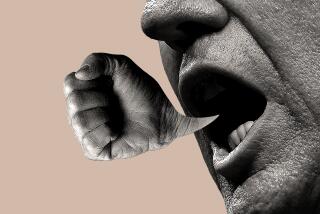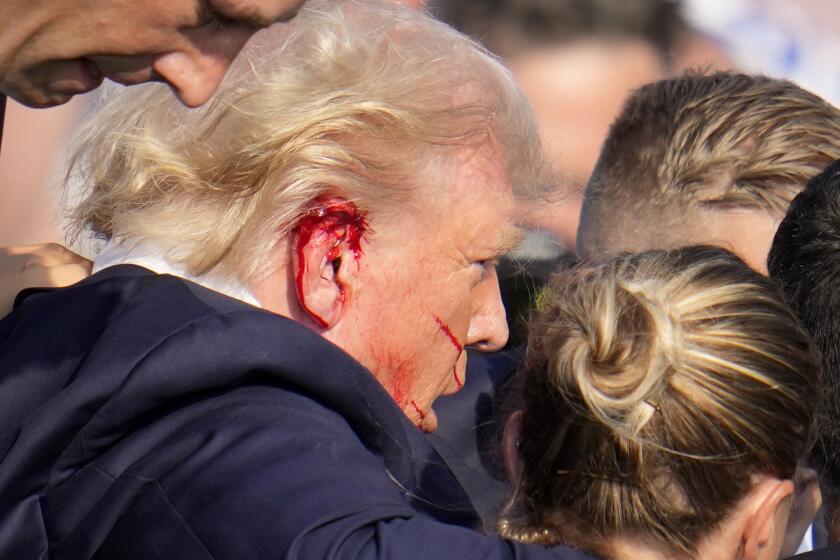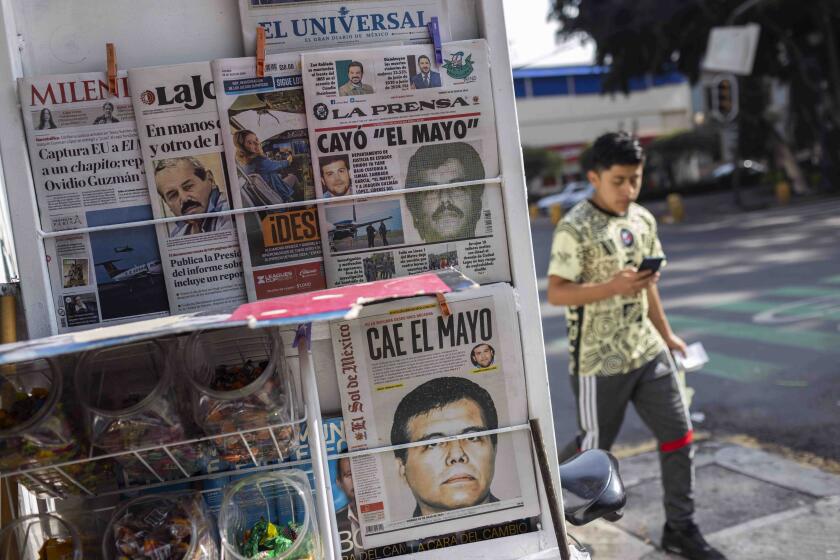President Trump says the ‘alt-left’ was partly to blame for the violence at Charlottesville. Wait: What’s the alt-left?

American politics used to divide itself into two generally opposing streams: Liberals leaned left. Conservatives leaned right.
Then came the era of Donald Trump, and the political landscape shifted from a two-lane highway to a train wreck. “Right” was no longer adequate to include the fringe coalition of disaffected citizens whose views — anti-establishment, anti-diversity, anti-feminist, anti-Semitic, anti-egalitarian, anti-immigrant — were united by nothing so much as their communal anger.
Fast-forward to last week’s events in Charlottesville, Va., when self-described “alt-right” protesters bearing torches and shouting racist slogans paraded through town, confronting an organized group of anti-racist counter-protesters and sparking a raucous melee that left one person dead and many others injured.
Blame for the violence, President Trump said later, lay with “both sides” — with the white supremacist demonstrators of the alt-right who organized the “Unite the Right” rally, and also with those from the “alt-left” who had confronted them.
The who?
On Wednesday — as mourners gathered in Charlottesville to remember the woman killed when a white supremacist from Ohio allegedly plowed his car into a crowd of counter-protesters — Trump’s characterization of the anti-racists drew a mixed response of confusion, anger and, among some of Trump’s supporters, plaudits.
“What about the ‘alt-left’ that came charging at, as you say, the ‘alt-right?’” Trump said in attempting to describe the mayhem. “Do they have any semblance of guilt.... What about the fact they came charging with clubs in hands, swinging clubs?”
What, exactly — if anything — is the alt-left?
References to the alt-right movement have trickled slowly into the lexicon in recent years, used as a blanket term for a loose group united in their belief that white men have become disenfranchised. References to an alt-left are newer — and, some civil rights groups say, simply wrong. The term, they say, provides a false equivalency.
Since Trump’s election, many so-called alt-right supporters have seen the ascendance of Trump and some members of his administration as the rise of powerful allies. (Stephen K. Bannon, a senior advisor to Trump who used to run Breitbart News, once referred to the right-wing website as a “platform for the alt-right.”)
Thomas J. Main, a professor of public affairs at Baruch College, summed up the views of the far right as a belief that “racial groups are not created equal,” and said there is little with which to compare it on the left.
“They don’t think blacks and Jews should have equal rights,” said Main, who is writing the forthcoming book, “The Rise of the Alt-Right.” “On the left, there is nothing analogous.”
Timothy Snyder, a historian and professor at Yale University, said “’alt-right’ is a term … meant to provide a fresh label that would sound more attractive than ‘Nazi,’ ‘neo-Nazi, ‘white supremacist,’ or ‘white nationalist.’”
“It’s not that society labels people in this way; it is that these Nazis and white supremacists now label themselves that way,” he said. “With ‘alt-left’ it’s a different story. There is no group that labels itself that way. There are a few people who have decided to resist Nazis with violence, but they are not representative of the much larger group of Americans who oppose racism.”
Even before Trump’s comments this week describing the counter-protesters, the idea of an alt-left — also used to describe politicians and the media — seeped into the mainstream dialogue from conservative groups and some of Trump’s most ardent supporters in right-wing media.
In November, just weeks after the presidential election, Fox News host Sean Hannity, a friend of Trump’s, used the term on social media.
“Do you consider Occupy, Move on, BLM radical left? I call them ‘alt radical left,’” he tweeted.
Several weeks later, One Nation, a conservative-leaning advocacy group, sent an email blast to supporters, castigating Sens. Bernie Sanders of Vermont and Elizabeth Warren of Massachusetts — a pair of liberals whose populist messages of income inequality have ignited progressives.
“Elizabeth Warren and Bernie Sanders Lead Alt-Left in Hijacking of Bipartisan Medical Research Bill,” read the subject line of the email.
During the weeks to follow, Hannity, who regularly dines with the president, used the term on several occasions in op-eds, on social media and on his nightly broadcast.
In a January opinion piece posted on Fox News, titled, “Trump, Spicer, turn tables on alt-left media,” Hannity lauded Trump and his then-Press Secretary Sean Spicer for how they battled the media. And in March, after Trump — without evidence — alleged that former President Obama had tapped his phones in Trump Tower, Hannity again used the phrase to describe the media.
“The Alt Left Propaganda media will run with every leak to help distract from Obamas & Co’s role in spying on @POTUS @realDonaldTrump,” Hannity tweeted.
Even some Democrats have used the term to describe the most liberal wing of the party. Shortly after Trump’s inauguration, Neera Tanden, who is president of the Center for American Progress and was a staunch supporter of Hillary Clinton during the 2016 Democratic primaries, used the phrase while tweeting about her concerns over possible Russian hacking directed at the campaign.
“I remember last summer when I pointed out Russia’s role in leaking/ the elections and the alt-left attacked me for McCarthyism. #backwards,” she tweeted in an apparent dig at Sanders’ supporters.
Barry Bennett, a Republican strategist who briefly worked on Trump’s presidential campaign, said Wednesday that an alt-left movement is alive in the country.
“There is an alt-left that is trying to define the progressive movement,” Bennett said. “They want church schools banned, guns banned, corporations eliminated. They hate the establishment. They throw rocks and light fires at protests.”
But when Trump used the term on Tuesday, it wasn’t directed toward the media or politicians. Instead, he focused it on the counter-protesters in Charlottesville who pushed back against the white supremacists and neo-Nazis gathered for the rally. Among those were members of the Black Lives Matter movement and anti-facists, also known as antifa.
Even so, Snyder said that in the months ahead Trump could use the term more often, just he does when calling critical news stories “fake news.”
“If his followers accept that there is an alt-left and that it is violent, Mr. Trump can then try to blame the alt-left when there is another, perhaps worse, incident of violence,” Snyder said.
Trump’s effort to conflate the two terms has caused concern among some civil rights groups.
“The ‘alt-left’ … is an artificial construction, essentially an epithet, created by some on the right to hurl at people in the left that they do not like,” said Mark Pitcavage, a research fellow at the Anti-Defamation League. “It is simply a label, simply an insult — indeed, it virtually exists to create an artificial and false equivalency.”
Heidi Beirich, a director at the Southern Poverty Law Center, an organization that tracks hate groups, agreed, saying Trump is seeking to promote a “false equivalency between neo-Nazis and others who espouse heinous views, and those protesting those horrendous ideas.”
“There is no equivalency between the racists and extremists that came to Charlottesville and those who were there protesting hate,” she said. “It is despicable to even suggest so and simply further emboldens white supremacists and makes them feel like they really do have a friend in our country’s highest office.”
Twitter: @kurtisalee
ALSO
A guide to some of the far-right symbols seen in Charlottesville
CEOs of Intel, Merck and Under Armour quit Trump advisory panel over Charlottesville controversy
More to Read
Sign up for Essential California
The most important California stories and recommendations in your inbox every morning.
You may occasionally receive promotional content from the Los Angeles Times.






